Has the era of 6G networks really begun? Well, in fact, the era of the sixth generation began at least two years ago (in 2020) but the development of this generation is still continuing and it will be launched in the near future. Let us show you all the details we know so far about this new generation and its impressive developments.
What stage of development have we reached?
6G networks are seen as the next revolutionary new technology, and as a result, they are receiving great interest day by day from various companies and governments of countries around the world, including Samsung, Huawei and Apple as well as telecom companies such as AT&T, T-Mobile, the government of the United States of America and China. Whoever has the most influence on this technology is the winner in this race.
China holds a total of 35% of patents related to 6G technology and is in the first place, while the United States of America comes in second place with 18%. Patents related to 6G technology have reached more than 38,000, and it seems that the scenario of the US-China crisis in 2019 related to 5G infrastructure, which began with the boycott of the Chinese company Huawei, will be repeated again.
It is worth noting here that talk about this technology is not theoretical or early, as in November 2020, China launched several experimental satellites on board the Long March-6 rocket, with the aim of developing and working on sixth generation networks, and the same year witnessed the arrival of the first chip operating with technology 6G networks by a team from Osaka University and Nanyang University of Technology in Singapore (11 Gbps).
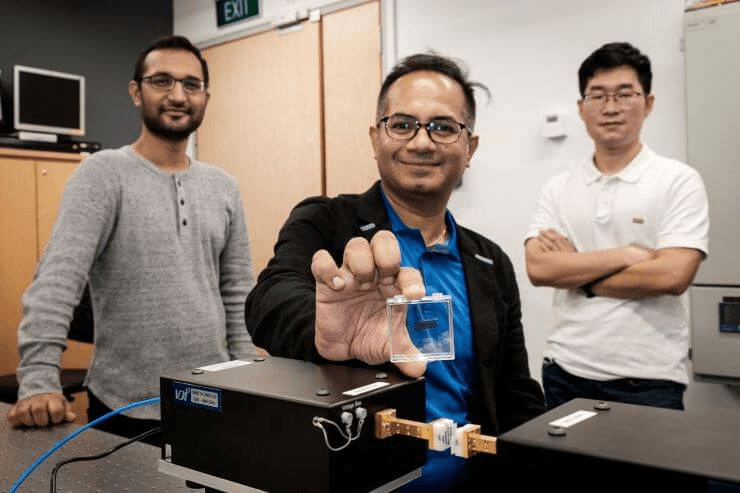
What are the developments of the new generation?
New generations of networks not only offer faster speeds with each update, but it is much more than that. We will not delve here into the precise technical details and changes that will accompany this new generation, but we will talk in general about the six most important characteristics – which Huawei calls the six pillars of the sixth generation networks – which are integration with artificial intelligence, network sensing, fast communication, the use of non-terrestrial networks Networks (NTN) in addition to high reliability and sustainability .
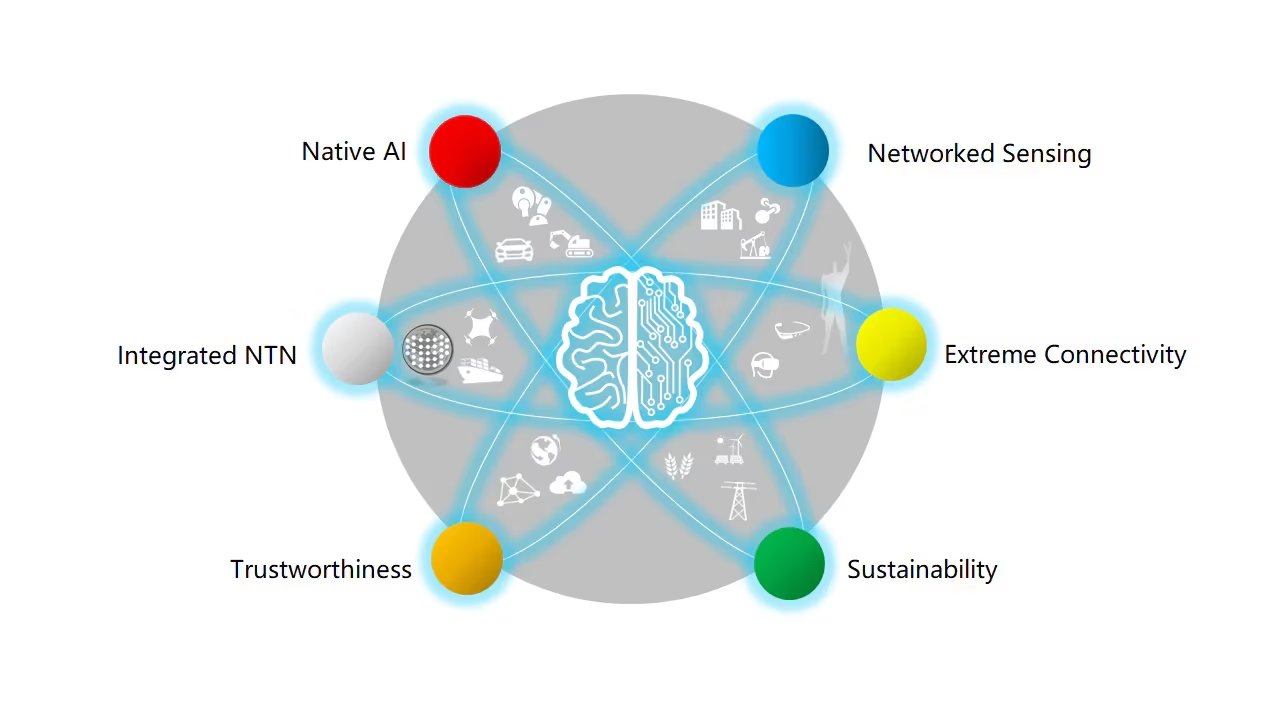
Integration with artificial intelligence techniques – Native AI
Sixth generation networks will take advantage of the great technical advances we have made in the field of artificial intelligence to improve their performance, especially the end-to-end technologies in the field of machine learning, as this will positively affect the strength of communication and the personalization and strengthening of the experience. This add-on may not be very important for the individual user but it is a revolutionary addition for large scale applications.
Network Sensing
As a result of the large frequency band that will be provided by 6G networks in addition to the bandwidth and antennas, network sensing will be one of the most prominent features in the new generation, as the waves of this generation will be able to absorb and learn about the physical world around them. This will reflect positively on the performance of communication towers and reduce the latency.
Speed Dial – Extreme Connectivity
Sixth generation networks will offer an astounding top speed of terabits per second – 50 times the speed of current 5G networks – and a user speed of 1 gigabit per second, and a near-zero signal delay of just 0.1 millisecond. These numbers open up opportunities and applications that we never imagined possible!
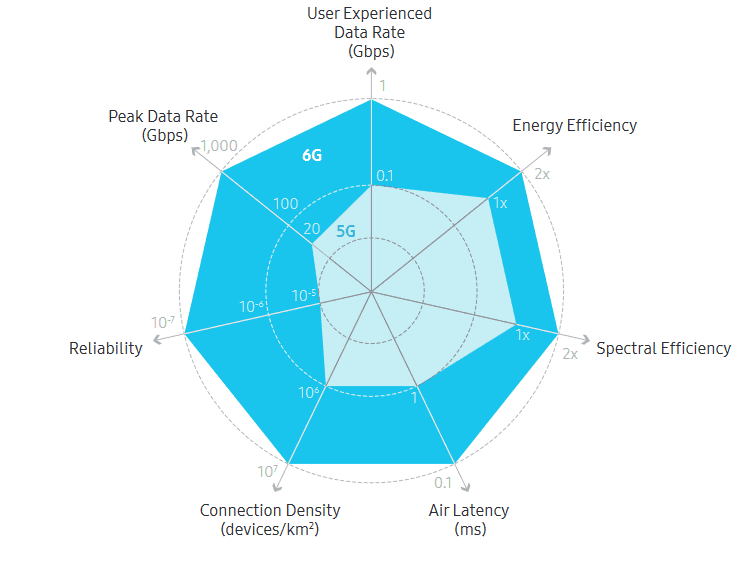
Use of non-terrestrial networks
Non-terrestrial networks mean the networks that are not located on the surface of the Earth but in the orbit of the Earth’s rotation. This type of network, which consists of a group of satellites located in the LEO and very low Earth orbit orbit (VLEO), will be exploited to improve the coverage of sixth generation devices and high areas above the Earth’s surface.
high reliability
We are in an era that depends on the internet and technology as an essential artery for its sustainability and survival, and this demand is increasing year by year, decade by decade. Therefore, 6G networks will provide high reliability in their use for various practical and entertainment applications, whether it is moving a robotic arm as if it were part of your body with zero delay or playing video games in metaverses with your friends.
Sustainability
As time progresses, we notice the destructive effects caused by man and his industrial projects on the environment and the planet in a more realistic and believable manner. 100 times compared to the current generation, while maintaining the quality and effectiveness of the connection.
Sixth generation networks open up a lot of possibilities and opportunities
These developments open up a lot of possibilities and opportunities, and although some of them may seem unnecessary or numbers that we will not need to reach or fully invest in now, you should think about these developments and their applications in the context of the future ( the next fifteen years ). Network generations are developed according to the requirements of the near future and not according to the requirements of the present.
Think about the world and technology around us In 15-20 years, your surroundings will be full of Virtual Reality, Augmented Reality and Mixed Reality, all the gadgets and equipment around you will require an internet connection, from your smart fridge to your self-driving car. All of these applications require a highly reliable infrastructure to operate as required without any errors, which means a high-speed connection and zero delay in signal.
This generation will not be limited only to the development of the ordinary needs of the individual (for example, downloading an entire season of a series in less than a second), but will be a development that will benefit all commercial, industrial and scientific sectors, and it will open the fields for ideas and innovations that we did not think could happen before!
It is not without some challenges
Of course, all these wonderful and impressive advantages are not possible without making some sacrifices, as to reach this high speed, the wavelength must be of the order of THz (one thousand gigahertz GHz). To understand what the problem is, we have to go back to 4G which had a maximum wavelength of 6GHz, and as a result its coverage towers couldn’t cover a radius of 16 km (10 miles) or less if there were objects blocking the signal.
The fifth generation, the current 5G, came from the communication networks and made it much worse, as the wavelength reached 110 GHz, and this length was ideal for achieving high speed; However, it comes at the expense of the coverage area as it did not exceed 305 meters (thousand feet), and this is why 5G towers are scattered in every street to achieve the desired result, as several sub-towers are distributed within an area linked to a main coverage tower.
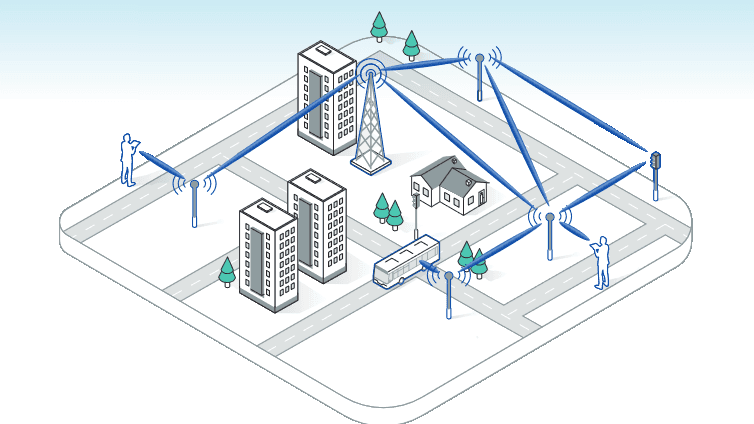
What about 6G networks, then? The sixth generation technology comes with a wavelength of the order of terahertz, as we mentioned earlier, it logically will suffer from twice the coverage range more than the current generation, which makes the process of installing coverage towers financially unfeasible. It doesn’t take much thought after noticing that there are many 5G towers in your city and you don’t get good coverage though. We need a workaround!

There are some proposed solutions that the development teams circulate among themselves, perhaps the most prominent of which is to make devices that use sixth generation networks as broadcast devices (Antennas) as well, and thus we have what is called a “Mesh Network” where the device closest to the communication tower transmits signals to the device closest to it. and so on. It is expected that all devices will become dependent on the Internet in one way or another in the near future, no matter how simple it is, and this will greatly facilitate the process.
When do we expect this technology to arrive?
Roughly, a new generation of networks appears every ten years, as the fourth generation was launched in 2009, followed by the launch of the current fifth generation in 2019, so we expect the sixth generation to be launched in 2030 at least (although development on this generation has been in progress since 2020), but we’re really excited about this technology!
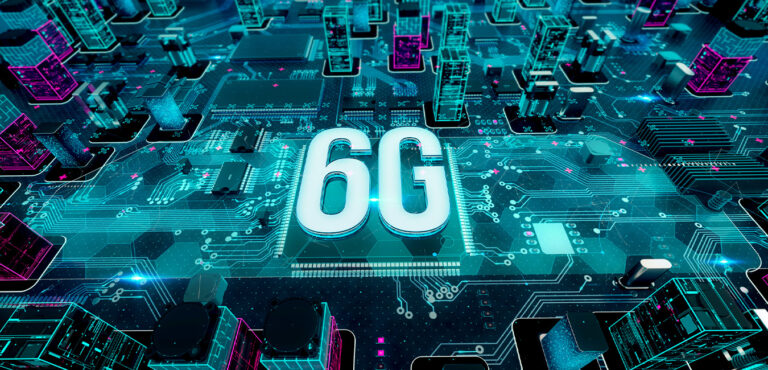

0 Comments